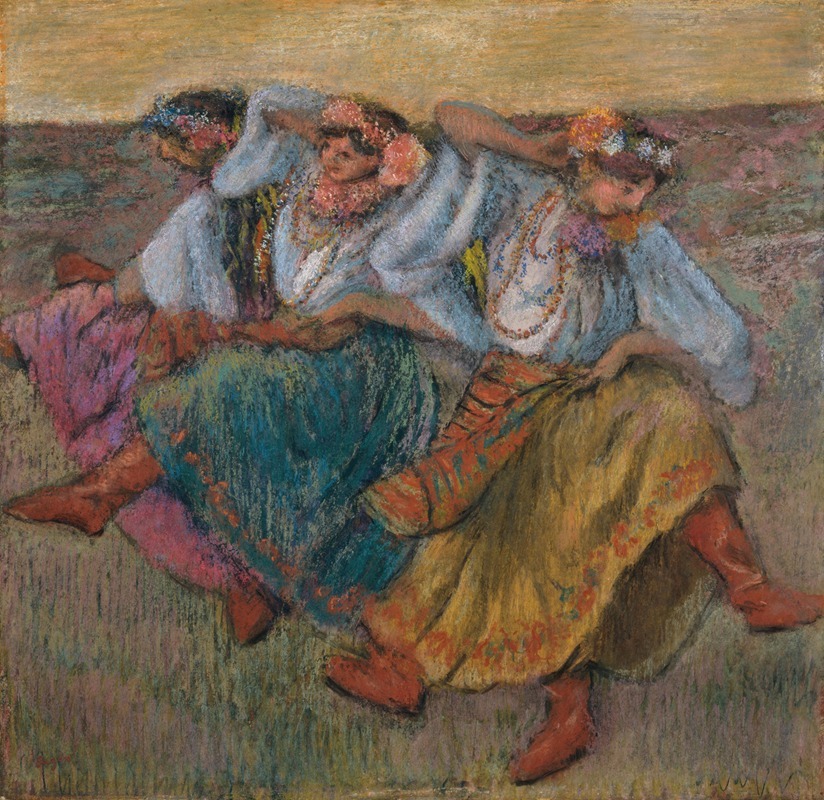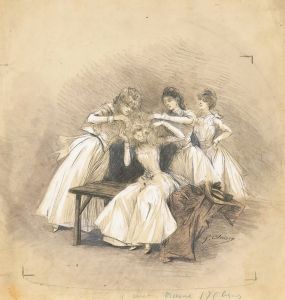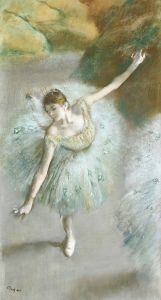
Russian Dancers
A hand-painted replica of Edgar Degas’s masterpiece Russian Dancers, meticulously crafted by professional artists to capture the true essence of the original. Each piece is created with museum-quality canvas and rare mineral pigments, carefully painted by experienced artists with delicate brushstrokes and rich, layered colors to perfectly recreate the texture of the original artwork. Unlike machine-printed reproductions, this hand-painted version brings the painting to life, infused with the artist’s emotions and skill in every stroke. Whether for personal collection or home decoration, it instantly elevates the artistic atmosphere of any space.
Russian Dancers by Edgar Degas
"Russian Dancers" is a series of pastel works created by the French artist Edgar Degas in the late 19th century. These artworks depict groups of female dancers performing traditional Russian folk dances. Degas, known for his fascination with movement and the human form, captured the vibrant energy and dynamic gestures of the dancers with his characteristic use of color and texture.
The series is notable for its departure from Degas' more commonly depicted subjects, such as ballet dancers in Parisian opera houses. Instead, "Russian Dancers" reflects an interest in folk traditions and cultural diversity, which were gaining popularity in Europe during this period. The dancers are portrayed in colorful costumes, adorned with floral patterns and headpieces, emphasizing the lively and festive nature of their performances.
Degas employed his mastery of pastel to create a sense of motion and spontaneity in these works. The bold, sweeping strokes and vivid hues convey the rhythm and vitality of the dance, while the overlapping figures suggest the fluidity of their movements. The artist's focus on the dancers' gestures and costumes, rather than their individual identities, highlights the collective spirit of the performance.
The exact inspiration for this series is not definitively documented, but it is believed that Degas may have been influenced by the increasing presence of Eastern European performers in Paris during the late 19th century. Russian folk dance troupes were known to tour Western Europe, introducing audiences to their traditional music and choreography. Degas' interest in these performances aligns with his broader exploration of contemporary life and cultural expression.
"Russian Dancers" is part of Degas' later body of work, during a time when his eyesight was deteriorating. Despite this challenge, his use of pastel became more experimental and expressive, as seen in the dynamic compositions and bold color palette of this series. These works are considered an example of Degas' ability to adapt his techniques and continue innovating as an artist.
Today, several pieces from the "Russian Dancers" series are held in major art collections, including the National Gallery in London. They remain celebrated for their vibrant depiction of movement and their contribution to Degas' exploration of dance as an artistic subject.


















